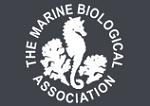APHOTOMARINE
An educational resource dedicated mainly to the photography
and diversity of marine life that can be found in coastal waters
and intertidal areas of Great Britain and Ireland by David Fenwick.

Polysiphonia brodiei
- branch 1
Brodie's Siphon Weed
Polysiphonia brodiei
- with 0.1mm division rule 1
Brodie's Siphon Weed
Polysiphonia brodiei
- cystocarps 1
Brodie's Siphon Weed
Polysiphonia brodiei
- cystocarps 2
Brodie's Siphon Weed
Polysiphonia brodiei
- cystocarp 1
Brodie's Siphon Weed
Polysiphonia brodiei
- stem exterior 1
Brodie's Siphon Weed
Polysiphonia brodiei
- stem section 1
Brodie's Siphon Weed
Polysiphonia brodiei
- on octopus pot 1
Brodie's Siphon Weed
Polysiphonia brodiei
- on octopus pot 2
The species here was found covering an octopus pot that had washed ashore at Perran Sands, Cornwall. 13.11.16.
Here I must thank Tracey Williams fpr passing the pot to me to look at, and Francis StPierre Bunker for identifying the species of Polysiphonia.
Sections of stem are often used to identify Polysiphonia species, here's how I prepared sections for the image seen above.
With a new scalpel blade I cut about eight slices of stem as thinly as I could using a stereozoom microscope. This was done on a dry microscope slide, the sections were then spaced equally apart. A couple drops of glycerine were placed over the sections and a microscope coverslip was placed on top. The sections were then examined and photographed using a compound microscope. One particularly good example was found among the eight sections.
APHOTOMARINE supports open source data recording and sharing for the benefit of wildlife, recorders, research, science and education. The project recommends the following websites and works with the following bodies and organisations.
The Marine Biological Association or MBA, based in Plymouth, is one of the world’s longest-running societies dedicated to promoting research into our oceans and the life they support. Since 1884 the MBA has been providing a unified, clear, independent voice on behalf of the marine biological community.It has a growing membership in over 40 countries.
The National Biodiversity Network or NBN is a charity that supports open source data sharing and recording supporting conservation, science and education. "Why do recorders need open source?". Simply because it supports the core values of wildlife recording and the free use of records and data over a very wide network that includes partners like the Natural History Museum.
The taxonomy used here is based on that of the following database, which is also used by the MBA, NHM and the NBN.
The World Register of Marine Species or WoRMS.
AlgaeBase is a database of information on algae that includes terrestrial, marine and freshwater organisms.

